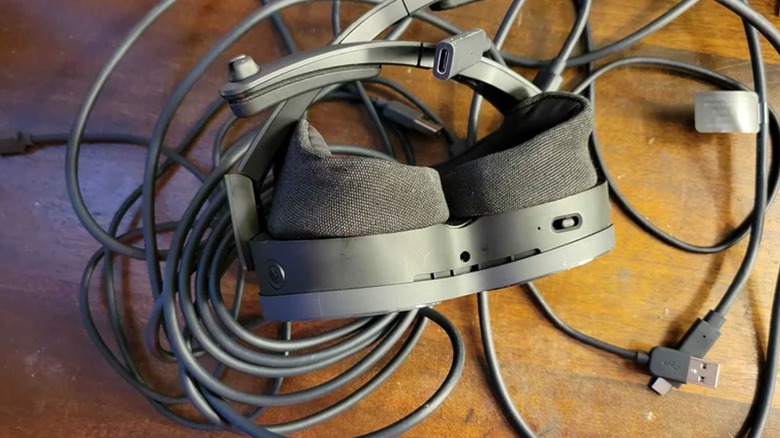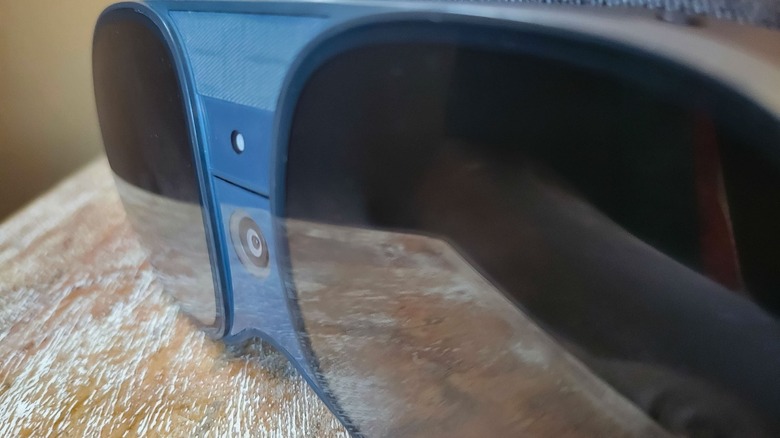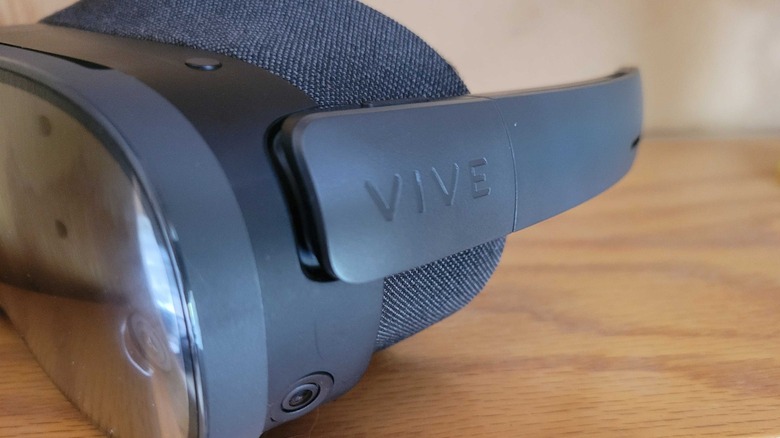HTC Vive XR Elite Doesn't Need To Be Plugged Into A PC (But Here's Why You May Want To)
The HTC Vive XR Elite is a fantastic VR headset and (as our HTC Vive XR Elite Review suggests), it's a direct rival to the Meta Quest Pro. The headset functions as a standalone unit and is capable of powering anything the Quest Pro currently can — though the game selection is limited. That doesn't matter too much as the headset is also great for PCVR.
Most PCVR users will make the most of the headset's wireless capabilities. If you connect it over WiFi, and ideally over WiFi 6e, you can experience it in all of its untethered glory. Games look great and the ability to move in every direction without a rope limiting you, and without worrying about yanking your PC setup off the desk, is brilliant.
But you do still have the option to tether the headset to a gaming PC or laptop and in certain circumstances — it makes a lot of sense. Yes, you will want to stick with a wireless connection for action-heavy games like "Blade and Sorcery," or "Skyrim VR," but if you're sitting down, there are a few clear reasons why you should pull out a Vive streaming cable, or any other VR-capable USB C to C cable, and plug the headset into your gaming rig.
A wire allows you to enter Glasses Mode
Wiring your headset to your computer unlocks one of the VIVE XR Elite's more interesting features. The headset's battery pack, which is found at the back and contributes much of the device's weight, can be easily detached. You just need to unplug its USB-C cable, hold down a couple of push-button releases, and pull it free. With the battery pack gone, the headset weighs less than ten ounces. The headset also comes with a high-quality USB-C cable that is PCVR capable. Plug one end of this into your laptop or PC, and the other into the XR Elite. The headset will then connect to the PC and will be running in "Glasses Mode."
There are a few benefits to Glasses Mode — and a few drawbacks. The main benefit is the level of comfort you'll experience when using the headset in this way. It's about the same size and weight as a set of ski goggles, so wearing it for an extended session is no problem. The downside is the lack of mobility. In addition to being tethered, the headset isn't as secure as it would be with something like a halo strap. So it's recommended you only use Glasses Mode for seated VR experiences, like flight simulators or driving games.
There are other reasons to plug in
While glasses mode is a big plus, especially for extended play sessions, it isn't the only reason you may want to wire up your VIVE XR Elite. While the device's battery life is passable, you will still only get around two hours of playtime before the headset dies, and you have to put up with its borderline painful charging system. If you're using a wire, the XR Elite can draw power straight from the PC or Laptop you're using and go on indefinitely.
The Vive XR Elite is also an incredibly portable headset, and a cable is a great way to take PCVR on the go, especially if you have a gaming laptop to combine it with. Connecting wirelessly would involve the use of a WiFi router. Not everyone has a WiFi-6e-enabled router available, so that may be out of the window in most cases. If you're using WiFi 5, you'll ideally want the headset to be the only device on the network to ensure nothing eats into the bandwidth. Then you'll need to be in the same room as the router, and you'll need to carry a cable anyway, as the laptop will need to be wired to the router via ethernet. Using a Vive Streaming cable to connect your laptop to the headset is probably the most convenient way you can take PCVR with you.


